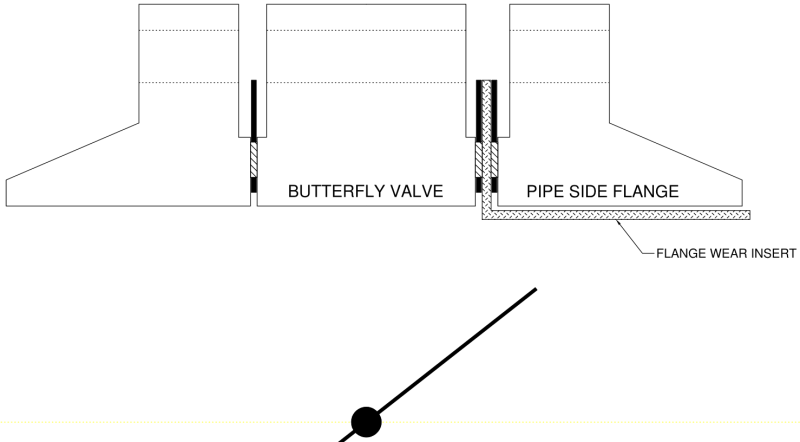Hi,
I was just wanting to have a quick discussion regarding clamping of either a flange wear insert or orifice plate in between two flanges and the effect of this on bolt loads due to there being 2 gaskets and a steel plate in between rather that just a single gasket. Following from that too, a butterfly valve that is clamped in between (hence the wear insert) which makes that 3 gaskets that are being clamped (see drawing) on a set of bolts.
Does this change the gasket factor (m) or Design seating stress from ASME VIII Div 1, appendix 2? What I was thinking is that the bolts will be doing up over a longer distance but the resistant still should be the same hence if all the gaskets are the same then m & y should be too. That is unless you assume the wear insert is another gasket material rather than ignoring it.
from ASME VIII Div 1, appendix 2? What I was thinking is that the bolts will be doing up over a longer distance but the resistant still should be the same hence if all the gaskets are the same then m & y should be too. That is unless you assume the wear insert is another gasket material rather than ignoring it.
Cheers

I was just wanting to have a quick discussion regarding clamping of either a flange wear insert or orifice plate in between two flanges and the effect of this on bolt loads due to there being 2 gaskets and a steel plate in between rather that just a single gasket. Following from that too, a butterfly valve that is clamped in between (hence the wear insert) which makes that 3 gaskets that are being clamped (see drawing) on a set of bolts.
Does this change the gasket factor (m) or Design seating stress
Cheers

